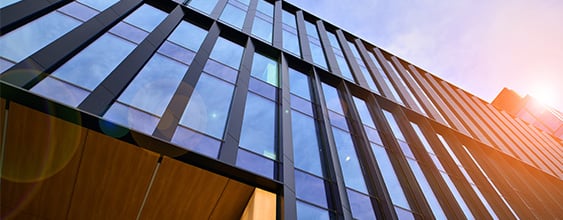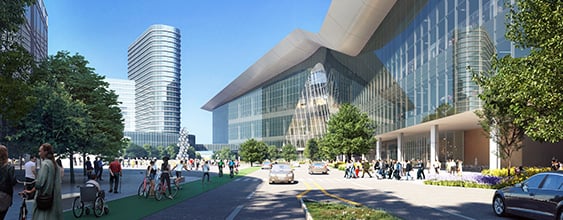The new, better normal is about familiar technologies in a through-the-looking-glass world. Up until now, features like touch-free entry or occupancy sensors have been nice-to-haves, found on a handful of brand-new exemplars or flagship retrofits, and implemented for a very different purpose. Now health is replacing hospitality as the primary motivation, and instead of optimizing for ever higher densities, we will need to set strict limits on occupation.
Covid-19 has given new impetus to a movement that has been in the wings for decades, believes Jim Whalen, chief information and technology officer at Boston Properties. “The term ‘smart building’ has been around for 20-plus years and the industry is still in the first or second innings. There are buildings with smart technologies, not smart buildings.” In February, Whalen gave a keynote speech on the next decade for property technology, or proptech. Reviewing it just a few short months later, he thinks that the key themes still hold true but the emphasis has changed: “Prior to Covid, links between healthy office environments and the productivity of your talent were beginning to enter design conversations based on emerging science. Now healthy buildings have taken on a completely new and elevated significance.”
The paradigm may have changed, but that doesn’t necessary mean the hardware has to. In many cases, making a building smarter involves reconfiguring existing systems, exploiting their functionality for another purpose, or using the data they produce in a different way, to support new business needs. Greatest attention has focused on the entrance, lobby and elevators, as the areas with the highest levels of traffic and the frontline of defence against infection. Employers will be able to use smart solutions to limit the number of people coming into the office on a given day, something we consider in another article. But as a back-up and to prevent too many people entering at peak times, an access control system can be set to stop the turnstiles from operating once a certain threshold is reached. For one client, O’Gallagher has discussed linking the access control system into presence sensors in the lobby and the elevator banks, as well as the automatic front doors. Then when a set occupancy level is reached in either or both spaces, the entrance doors and turnstiles can lock until they have cleared out. “We could also leverage the digital signage to trigger a notification so people know the door isn’t broken,” he says. “They’re the kind of discussions that we’re having right now, looking at the existing systems that we’re already putting into buildings and augmenting and integrating them to create safer and more informed environments for the landlords and the occupants.”
Where systems are already installed and integrated, programming in this additional functionality is relatively straightforward. But it will depend on what systems a building already has and their current level of sophistication: “It’s going to be a pretty wide range from one project to the next depending on the physical footprint of the systems, the desired functionality and how many we’re tying together.”















